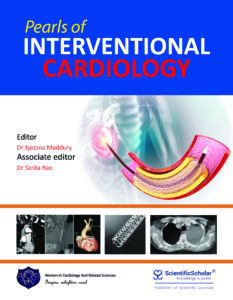
Welcome to Scientific Scholar
Scientific Scholar, USA, established with the aim of publishing scientific
journals.The mission of the company is “Share, Learn and Improve”.


CMAS # 2 (CytoJournal Monograph and Atlas Series)
Cytopathologic evaluation of effusion fluids is complex and can be challenging. Yet, because effusion fluids are relatively easy to collect, any pathology laboratory, unrelated to its level of expertise, may be confronted with such specimens. In comparison to other common specimens, effusion fluids need a special and unique approach for cytopathologic evaluation.
CMAS # 3 (CytoJournal Monograph and Atlas Series)
Cancer Uterine Cervix & The Bethesda System” is a multi author book which discusses Cervical Cancer in its entirety. When the work of this book began almost seven years back, the plan was to put together a practical compact format of a handbook of cervical cytology which would be useful in the diagnostic work at the microscope. The aim was to focus mainly on the description of lesions, along with carefully selected illustrations, that a cytopathologist was likely to need in routine practice. As the contents progressed, there was an irresistible incentive to cover along with cytology, descriptions of histopathologic findings too. Having quick and easy reference material of histopathologic basis of cytology would be a very logical content of any handbook. This inevitably led to an expansion of text and illustrations to include method of collection of Pap smear and screening technologies for cervical cancer with helpful feature of algorithms clearly intended to lead the way to standard follow up of women screened. Basics of Colposcopic findings in precancerous lesions of the cervix, that have bearing in the completion of the knowledge and workup of patients, have also been incorporated. As a result, the hand book has taken on the presentation of a textbook while still retaining the configuration of an Atlas because of its innumerable illustrations that have resulted in worthwhile increased coverage and usefulness.
Volume 27
The book Heat Shock Proteins (HSP) in Translational Neuroscience Volume 27 is the concise collection of articles focused to develop efficient therapies aimed at combatting various types of neurodegenerative diseases. Using an integrative approach, the contributors provide the most comprehensive review on the role of HSP in signaling pathways relevant to several neurodegenerative diseases. To enhance the knowledge on neurodegenerative diseases, this book reviews on the current progress on our understanding of role of HSP in various neurodegenerative diseases including glioblastoma, neuro-oncology, Alzheimer’s and central nervous system.